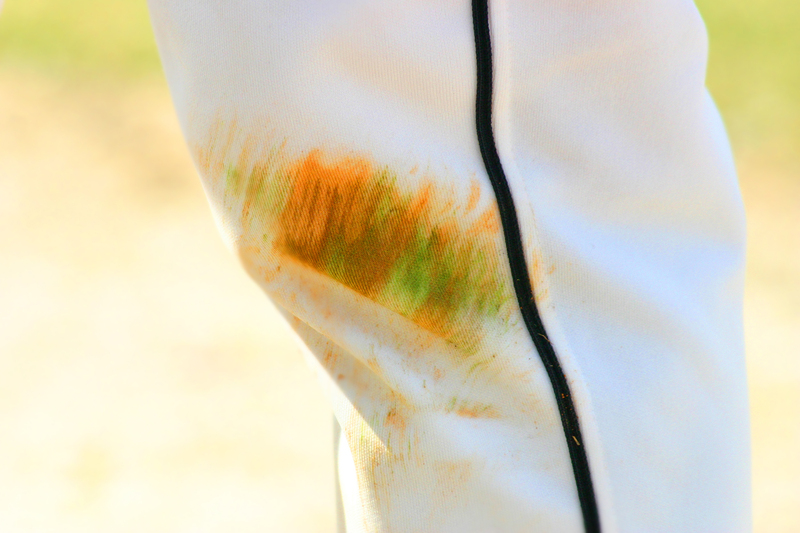Efficient Methods for Allergen and Dust Reduction at Home
Posted on 07/09/2025
Efficient Methods for Allergen and Dust Reduction at Home
Are you struggling with sneezing fits or itchy eyes every time you enter your home? For many people, allergens and dust are invisible enemies hiding in plain sight. Efficient dust and allergen control at home is essential for maintaining not only cleanliness, but also optimal health--especially for allergy sufferers, pet owners, or families with young children. In this comprehensive article, we'll explore a wide range of efficient methods for allergen and dust reduction at home to help create a fresher, healthier living environment.

Why Is Allergen and Dust Reduction Important at Home?
Before diving into the most effective techniques, it's vital to understand the importance of dust and allergen reduction at home. Allergens like dust mites, pet dander, pollen, and mold spores can trigger uncomfortable symptoms ranging from sneezing and runny noses to more severe asthma flare-ups. Dust, on the other hand, contains a mixture of fine particles--including dead skin cells, dirt, and fibers--that settle everywhere, even in the cleanest of homes.
- Healthier air quality: Reducing dust and allergens improves indoor air quality, vital for those with respiratory conditions.
- Improved sleep: Minimized allergens can lead to better sleep and less nighttime congestion.
- Cleaner appearance: Less visible dust means a tidier, more appealing home for everyone.
Main Household Allergens and Common Sources
- Dust Mites: Thrive in bedding, upholstered furniture, and carpets.
- Pet Dander: Tiny skin flakes and saliva from household animals.
- Pollen: Entering through open windows and doors, attached to clothes and pets.
- Mold Spores: Grown in damp, poorly ventilated areas like bathrooms and basements.
- Cockroach Droppings: Often overlooked, but potent asthma triggers in urban homes.
Proven Strategies for Allergen and Dust Reduction at Home
Ready to reclaim your home's air and seize control over invading allergens and dust? Here's a curated guide with practical and efficient techniques for dust and allergen removal at home you can implement right away.
1. Vacuuming with High Efficiency
- Choose a HEPA-filter vacuum: Vacuum cleaners with HEPA (High-Efficiency Particulate Air) filters remove up to 99.97% of airborne particles, trapping microscopic allergens and preventing them from being released back into the air.
- Frequency: Vacuum high-traffic and carpeted areas at least twice a week, and floors in bedrooms, living rooms, and pet areas even more often for best results.
- Don't forget the upholstery: Use attachment tools to clean sofas, chairs, curtains, and mattresses. Dust mites thrive in soft furnishings!
2. Smart Dusting Methods
- Use microfiber cloths: These specialized cloths grab and hold onto dust, rather than just moving it around. Dampen slightly for better results.
- Start from the top: Work from higher shelves downwards to prevent settling dust from landing on cleaned surfaces.
- Avoid feather dusters: They simply disperse dust into the air, making allergen control less effective.
3. Keep Bedding and Linens Allergen-Free
- Wash regularly in hot water: Launder sheets, pillows, and blankets weekly at 60?C (140?F) or higher to kill dust mites.
- Use dust-mite-proof covers: Mattress and pillow encasements prevent these tiny pests from burrowing and multiplying in bedding.
- Replace pillows: Swap them out every 1-2 years, as they accumulate allergens over time, even with regular washing.
4. Maintain Ideal Humidity Levels
- Keep humidity below 50%: This inhibits dust mite and mold growth, both of which thrive in damp, humid conditions.
- Employ dehumidifiers: Especially essential in bathrooms, basements, or during humid seasons.
- Use exhaust fans: Ventilate bathrooms and kitchens to reduce moisture accumulation after showers or cooking.
5. Air Purification for Allergen Reduction
- HEPA air purifiers: Place these in bedrooms, living rooms, or other high-use areas to capture allergens and dust present in the air.
- Change HVAC filters regularly: High-efficiency filters in your heating and cooling systems capture more particles before they circulate throughout your home.
- Ventilation matters: When outdoor pollen counts are low, open windows to allow fresh air exchange--on high-pollen days, keep them closed.
6. Control Pet Dander Efficiently
- Regular grooming: Bathe and brush pets frequently to reduce the volume of shed fur and dander inside your home.
- Pet-free zones: Keep animals out of bedrooms and off upholstered furniture, if possible.
- Wash pet bedding: Launder their beds and blankets weekly using hot water.
- Invest in HEPA-filter vacuums: As mentioned, these capture pet allergens and hair far better than standard vacuums.
7. Smart Flooring Choices and Maintenance
- Hard surfaces are best: Wood, tile, or vinyl floors don't trap allergens like carpet does. Choose these where feasible for easier maintenance.
- Carpet care: If you have carpets, opt for low-pile varieties and have them professionally cleaned at least annually. Area rugs should be washable.
- Door mats: Place at all entrances to catch allergens/pollen brought in on shoes, reducing the spread throughout your home.
8. Declutter for Dust Reduction
- Store items in closed containers: Dust settles on knickknacks and books. Use bins, baskets, or cabinets with doors to protect belongings and ease cleaning.
- Limit soft furnishings: Curtains, cushions, and other textiles collect dust. Reduce where possible or launder regularly.
- Minimize clutter: Less clutter means fewer surfaces for dust to accumulate and faster cleanups overall.
Advanced Allergen and Dust Elimination Techniques
Once you establish routine cleaning and maintenance, consider these advanced options for further boosting your home's allergen defense:
- Install UV air purifiers: These add a layer of defense by neutralizing airborne mold spores, bacteria, and viruses--helpful in homes with severe allergy or asthma concerns.
- Seal windows and doors: Use weatherstripping or caulk to prevent outside pollen, dust, and other allergens from entering; repair screens with tears or holes promptly.
- Remove or reduce drapes: Opt for blinds or washable curtains instead, as heavy drapery harbors dust.
- Hire professional services: Annual deep cleans by pros--especially carpet & upholstery cleaners--can dramatically cut dust and allergen buildup.
- Routinely clean vents and ducts: Out-of-sight dust and mold can thrive in neglected HVAC or dryer vents.
Natural Remedies for Allergen and Dust Management
If you're seeking eco-friendly allergen control approaches for your home, nature offers a few gentle, effective solutions:
- Essential oils: Oils like eucalyptus and tea tree are known for their antimicrobial properties. Diffusing them can help inhibit allergens, but always ensure no one in your household is sensitive first.
- Baking soda: Combine with vacuuming for a simple, chemical-free carpet freshener that also absorbs odors and some allergens.
- Natural air purifying plants: Some indoor plants (like snake plants and pothos) filter airborne toxins, but take care as they may also collect dust on their leaves--wipe them down regularly!
Combat Mold and Dampness--Key Hidden Culprits
- Fix leaks promptly: Plumbing issues or roof leaks can cause unseen water damage and mold proliferation behind walls or under flooring.
- Use mold inhibitors: Add these to paint or clean surfaces in moisture-prone areas.
- Ventilate, ventilate, ventilate: Bathrooms, kitchens, and laundry rooms should all have working exhaust fans or get regular fresh air to prevent humidity buildup.
Habits and Lifestyle Changes for Ongoing Dust and Allergen Reduction
Creating a low-allergen home isn't just about cleaning--it's about modifying daily routines for the best long-term results. These lifestyle tips can make a substantial difference in your efforts for efficient allergen and dust reduction at home:
- Leave shoes at the door: Adopt a no-shoes policy indoors to keep outdoor dust, pollen, and microbes at bay.
- Groom pets outdoors: Brush your pets outside to prevent dander dispersal indoors.
- Regularly bathe and groom pets: Reduces buildup of dander and allergens in fur.
- Keep windows closed during high pollen seasons: Check local pollen counts, and avoid introducing fresh pollen on peak days.
- Shower and change after outdoor activities: Prevents allergens from clinging to skin, clothes, and bedding.
Special Precautions: Allergy-Proofing Kids' Bedrooms
- Opt for washable toys: Soft toys are dust magnets--choose ones you can sanitize in the wash.
- Minimize stuffed animals: Store most in closets or bins and allow only a few "favorites" at a time.
- Frequent bedding changes: More often for young kids, especially if they struggle with allergies or eczema.
- Keep pets out of children's rooms: This ensures a dander-free area for better breathing and sleep.

Summary: Creating an Allergen and Dust-Resistant Home
Efficient methods for allergen and dust reduction at home encompass a combination of diligent cleaning practices, smart use of technology (like HEPA filters), lifestyle modifications, and targeted interventions for problem areas. By implementing these proven techniques, you can enjoy:
- Cleaner, fresher air year-round.
- Fewer allergy and asthma flare-ups for your family.
- A tidier home with less visible dust and debris.
Whether you're an allergy sufferer, concerned parent, or simply aim for a healthier living space, making these steps part of your regular routine will ensure you breathe easier and live better. Start today, and transform your home into a comfortable, allergen-smart haven for years to come!
Frequently Asked Questions (FAQ)
-
How often should I wash bedding to reduce dust mites?
Once a week in hot water (at least 60?C or 140?F) is recommended for optimal dust mite control. -
What type of vacuum is best for allergies?
A vacuum cleaner with a HEPA filter traps the smallest allergens and is ideal for allergy-management. -
Are air purifiers worth the investment?
Yes--HEPA air purifiers significantly reduce airborne allergens and dust, especially in confined rooms. -
Can plants really purify the air and reduce allergens?
Some plants improve air quality, but they may also collect dust or even trigger symptoms in sensitive individuals. Clean their leaves regularly.
Start your journey toward a healthier, dust-free home today with these efficient allergen and dust reduction strategies. Your well-being--and that of your loved ones--depends on it!



